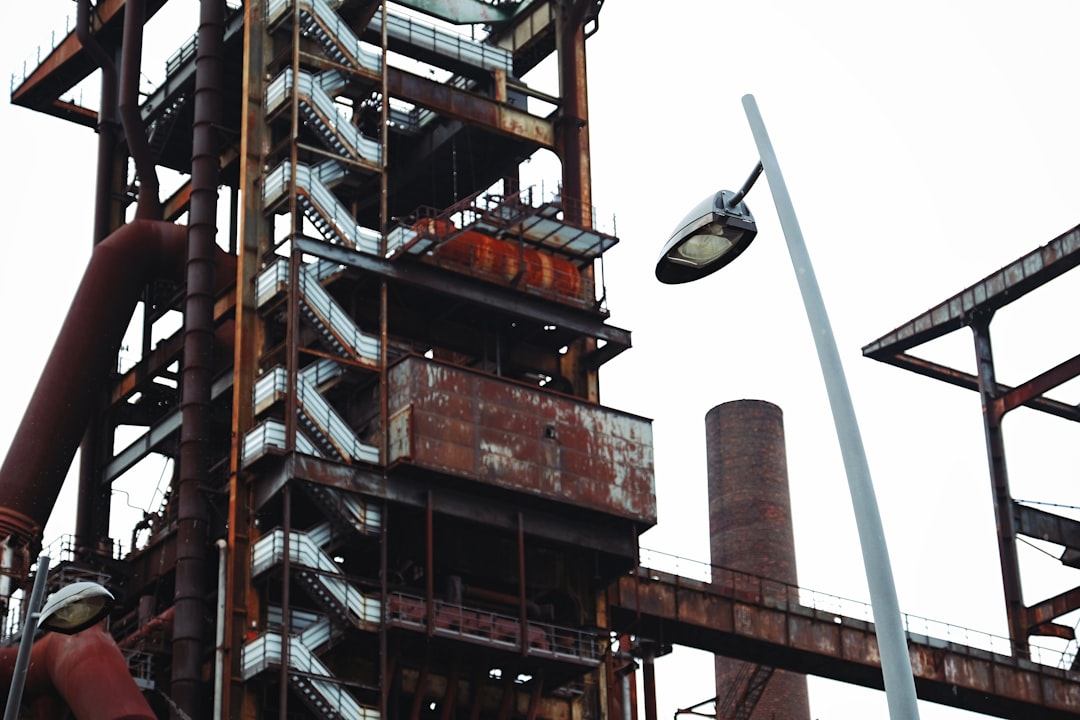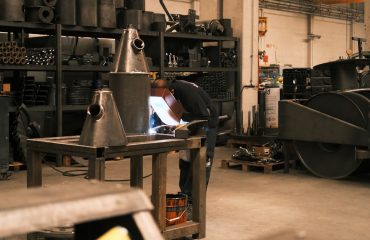The steel industry, a cornerstone of global infrastructure and manufacturing, faces unique challenges in managing its intricate supply chain. From the extraction of raw materials to the delivery of finished products, the process is complex, demanding, and heavily reliant on efficient coordination and technological innovation. This post delves into the critical aspects of supply chain management within this vital sector.
1. Raw Material Sourcing: The Foundation of Steel Production
The journey of steel begins long before the blast furnace. Securing a consistent supply of high-quality raw materials, primarily iron ore, coking coal, and limestone, is paramount. This involves strategic partnerships with mining companies, often located geographically distant from steel mills. Effective sourcing strategies must consider:
- Geopolitical risks: Political instability, trade wars, and resource nationalism can significantly disrupt supply chains. Diversification of sourcing locations is crucial to mitigate these risks.
- Price volatility: Commodity prices fluctuate dramatically, impacting profitability. Hedging strategies and long-term contracts are essential to manage price risk.
- Sustainability concerns: The environmental impact of mining is increasingly scrutinized. Steel producers must prioritize suppliers committed to responsible mining practices and environmental stewardship.
- Quality control: Maintaining consistent raw material quality is critical for the production of high-performance steel. Rigorous quality control measures throughout the sourcing process are necessary.
2. Manufacturing and Production: Optimizing the Steelmaking Process
The steelmaking process itself is a complex series of transformations, requiring precise control over temperature, chemical composition, and processing parameters. Efficient manufacturing hinges on:
- Production planning and scheduling: Optimizing production schedules to meet customer demand while minimizing waste and maximizing efficiency is crucial. Advanced planning and scheduling (APS) systems are increasingly used to achieve this.
- Inventory management: Balancing inventory levels to avoid stockouts while minimizing storage costs is a delicate act. Just-in-time (JIT) inventory management principles are often employed to reduce inventory holding costs.
- Process optimization: Continuous improvement initiatives, such as Lean manufacturing and Six Sigma, are vital for enhancing productivity and reducing production costs.
- Technological advancements: The adoption of advanced technologies, such as artificial intelligence (AI) and machine learning (ML), offers significant potential for optimizing steelmaking processes and improving quality control.
3. Logistics and Transportation: Delivering Steel to Market
Once steel is produced, efficient logistics and transportation are essential to deliver it to customers on time and in good condition. This involves:
- Transportation modes: Choosing the optimal transportation mode (rail, road, sea) depends on factors such as distance, cost, and delivery time. Often, a multimodal approach is necessary.
- Warehouse management: Efficient warehouse management systems are crucial for storing and handling steel products, ensuring their protection from damage and theft.
- Order fulfillment: Accurate and timely order fulfillment is critical for customer satisfaction. Effective order management systems are essential for tracking orders and ensuring timely delivery.
- Supply chain visibility: Real-time tracking and monitoring of shipments using technologies like GPS and RFID provides valuable insights into the location and status of goods, enabling proactive management of potential disruptions.
4. Risk Management and Resilience: Navigating Uncertainties
The steel industry faces numerous risks, including price volatility, geopolitical instability, natural disasters, and supply chain disruptions. Effective risk management strategies are crucial for ensuring business continuity:
- Supply chain diversification: Reducing reliance on single suppliers or transportation routes minimizes the impact of disruptions.
- Inventory management strategies: Holding strategic safety stock can mitigate the impact of unexpected supply chain disruptions.
- Contingency planning: Developing robust contingency plans to address potential disruptions is crucial for ensuring business continuity.
- Collaboration and communication: Strong communication and collaboration with suppliers, customers, and logistics providers are essential for proactively managing risks.
5. Emerging Technologies and the Future of Steel Supply Chain Management
Technological advancements are transforming the steel industry’s supply chain. Key innovations include:
- Blockchain technology: Enhancing transparency and traceability throughout the supply chain, improving accountability and reducing fraud.
- Artificial intelligence (AI) and machine learning (ML): Optimizing production processes, predicting demand, and improving logistics efficiency.
- Internet of Things (IoT): Real-time monitoring of assets and processes, enabling proactive management of potential disruptions.
- Digital twin technology: Creating virtual representations of the supply chain, allowing for simulations and optimization of processes before implementation.
The effective implementation of these technologies requires significant investment in infrastructure and expertise, but the potential benefits in terms of efficiency, cost savings, and sustainability are substantial.
In conclusion, successful supply chain management in the steel industry requires a holistic approach encompassing strategic sourcing, efficient manufacturing, robust logistics, proactive risk management, and the adoption of emerging technologies. By mastering these elements, steel producers can enhance their competitiveness, improve profitability, and contribute to a more sustainable future.
SEO Tags:
Steel Supply Chain, Steel Industry Logistics, Steel Manufacturing, Supply Chain Management, Steel Industry Technology




